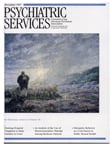Meanings of Madness
Meanings of Madness, edited by medical anthropologist Richard Castillo, takes a look at mental illness from an anthropological viewpoint and attempts to provide a framework that is holistic and client centered. Using the broad perspective that is the hallmark of anthropology, the book seeks to weave together theories and data from neurobiology, psychology, and the social and cultural sciences to make its points.
Twenty-three previously published articles by a coterie of multidisciplinary experts are compiled into 15 sections. Most of the articles are ethnographic or clinical case studies illustrating the influences of culture on various categories of mental illness and treatments. Also included are some theoretical and review articles as well as an epidemiological study. Each section begins with an introduction highlighting the central points made by the contributors.
A central theme is that madness or mental illness occurs in all cultures; it assumes different meanings in different cultural contexts. For example, in medieval Europe, madness was thought to be related to demonic possession and witchcraft, and treatments necessarily followed the prescriptions provided by the church. With the advent of modern science, the scientific paradigm became the dominant cultural framework, and madness was related to genetic, biochemical, psychological, and sociocultural anomalies. The power of medications to correct "chemical imbalance" and the availability of new diagnostic tools to help unlock the mystery of the brain gave rise to the dominance of a disease-centered psychiatry.
Castillo argues that psychiatry should adopt a broader perspective on mental disease, to include the totality of the thoughts, emotions, social context, and cultural identity of the individual. This point is well taken and resonates well with the sentiment of contemporary psychiatrists who adhere to Engel's biopsychosocial perspective on health and disease. The author rightly cites the exciting work of Kandel and Hawkins (1) documenting the effect of individual learning and memory storage on the changes in the neuronal structure of the brain. Because culture determines many aspects of learning, it is now possible to conceptualize a biocultural basis of mental disorders.
However, in Castillo's zeal for broadening a disease-centered psychiatry to a more holistic perspective he terms client-centered psychiatry, he glosses over some of the clinical realities psychiatrists face. For example, mentioning that numerous reports indicate that witchdoctors, shamans, and religious leaders are capable of getting good clinical results, he says, "It is not necessary to diagnose a 'possessed' patient with schizophrenia and provide medications to obtain a good outcome." This statement flies contrary to current scientific data on the treatment of schizophrenia. I believe it is crucial to provide a differential diagnosis of various conditions that may mimic "possession" phenomenon (2). If the disorder turns out to be schizophrenia, the use of medications is essential, particularly in treating the acute phase of the illness.
The juxtaposition of the terms "patient" and "client" in the introductions to the sections is confusing. It may reflect the current power struggle between proponents of a biomedically oriented psychiatry and those advocating a more social approach. I believe this divisiveness is not necessary for those who adhere to a biopsychosocial approach.
The editor himself proposes a client-centered psychiatry, rather than a patient-centered psychiatry. I wonder whether, as a political-cultural statement, psychiatric medicine is prepared to reverse its cultural tradition and substitute "client" for "patient." Would a Client's Bill of Rights be more humanizing and useful than a Patient's Bill of Rights?
Overall, this book is a nice addition to the increasing number of publications that remind us of the importance of considering cultural factors in patients' care. Each chapter is an excellent reference on the topic presented. For those who want to foster a greater theoretical understanding of culture and psychiatry, Meanings of Madness is a useful compendium.
Dr. Gaw is medical director of Medfield (Mass.) State Hospital and professor and director of cross-cultural psychiatry in the department of psychiatry at the University of Massachusetts Medical School in Worcester.
1. Kandel ER, Hawkins RD: The biological basis of learning and individuality. Scientific American 262(3):78-86, 1992Google Scholar
2. Gaw AC, Ding Q, Levine RL, et al: The clinical characteristics of possession disorder among 20 Chinese patients in the Hebei Province of China. Psychiatric Services 49:360-365, 1998Link, Google Scholar



